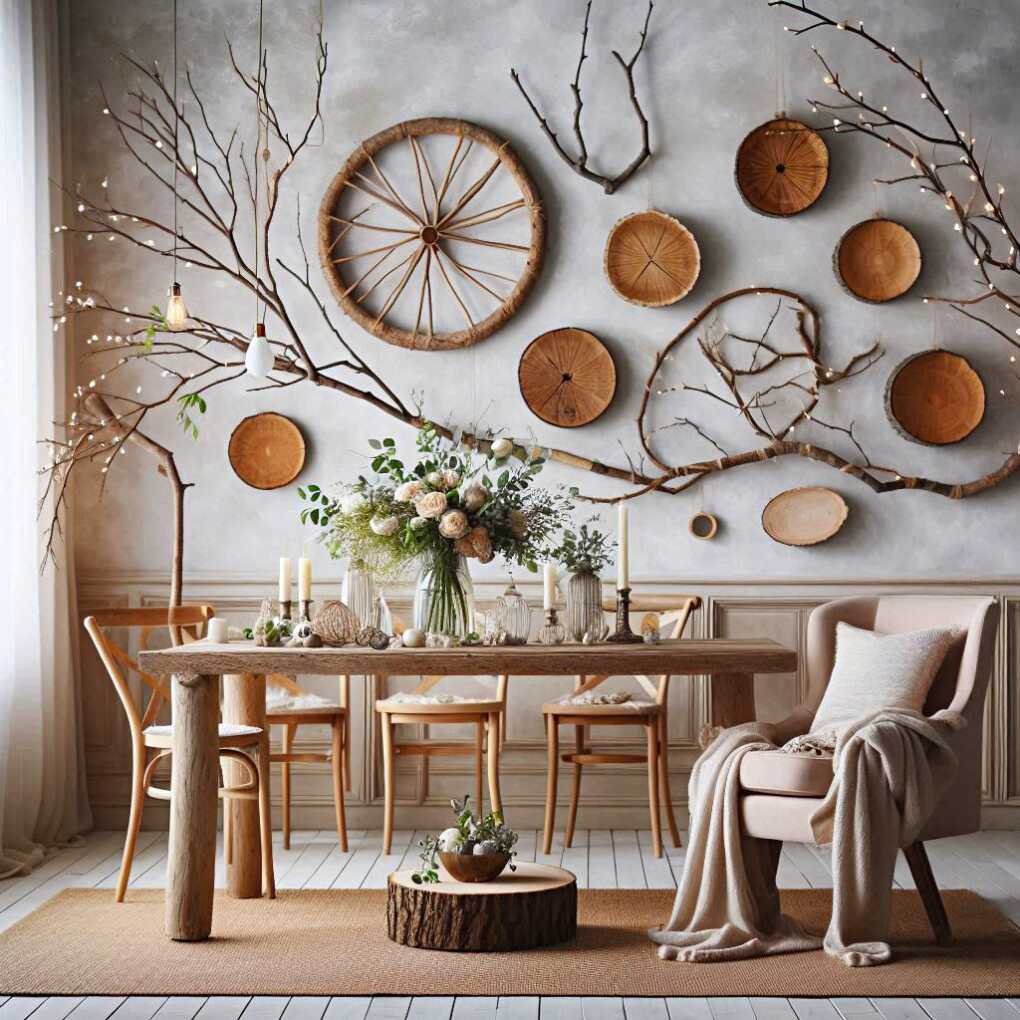Nature has always played an essential role in human life, not only for survival but also for beauty and symbolism. Among the many natural elements embraced in design and tradition, pyntekvister—decorative twigs and branches—stand out for their timeless charm. From Scandinavian traditions to modern minimalist homes, pyntekvister add warmth, texture, and meaning to spaces.
In this comprehensive guide, we’ll explore the history, symbolism, creative uses, cultural traditions, and sustainability of pyntekvister, along with practical tips and DIY inspirations to help you embrace these natural treasures in your own life.
Understanding Pyntekvister
The word pyntekvister comes from the Scandinavian languages, combining pynte (to decorate) and kvister (twigs/branches). At its core, it refers to ornamental branches used for decoration in homes, celebrations, and seasonal rituals.
These branches can be:
-
Natural: freshly cut twigs with leaves or blossoms.
-
Dried: rustic and long-lasting, often combined with dried flowers.
-
Artificial: crafted versions with glitter, metallic coatings, or LED lights.
-
Seasonal: specific branches chosen to reflect spring, summer, autumn, or winter themes.
Pyntekvister are admired because they combine simplicity and versatility. Whether styled in a vase, arranged into wreaths, or decorated for festivals, they bring a touch of nature indoors while reflecting cultural traditions.
The Historical Roots
Decorating with branches is not a modern trend—it has ancient origins. Across cultures, people have used twigs and branches as symbols of fertility, renewal, and protection.
-
Scandinavian Traditions: Birch and willow branches were used in early spring festivals to symbolize rebirth after winter. Easter pyntekvister decorated with feathers and eggs are still popular in Norway and Sweden today.
-
European Customs: In medieval Europe, households often displayed greenery indoors as a symbol of health and prosperity.
-
Japanese Culture: Cherry blossom branches, similar to pyntekvister, are used in hanami celebrations to honor the fleeting beauty of life.
-
Celtic Symbolism: Branches were believed to connect humans with nature’s energy and were often used in rituals for protection.
Thus, pyntekvister are not just decorations—they are living symbols of heritage and nature’s cycles.
Why Pyntekvister Remain Timeless
Modern interior design continues to embrace pyntekvister because they bring together aesthetic appeal and deeper meaning. Some of the key reasons include:
-
Natural Aesthetic: Twigs introduce organic shapes and textures, softening modern interiors.
-
Sustainability: They encourage eco-friendly decorating by using what nature provides.
-
Affordability: Unlike expensive décor pieces, branches can be collected from gardens or forests.
-
Seasonal Adaptability: They can reflect every season, from spring blossoms to frosted winter twigs.
-
Creative Freedom: Pyntekvister can be painted, arranged, or decorated in endless ways.
Types of Pyntekvister
Not all pyntekvister are the same. Depending on material, purpose, and season, they can be grouped into several categories.
Natural Pyntekvister
Freshly cut from trees and shrubs, these branches provide an authentic, organic look. Common choices include:
-
Birch twigs – flexible and light, often used in Nordic décor.
-
Willow branches – ideal for weaving wreaths or bending into shapes.
-
Cherry blossoms – perfect for spring celebrations.
-
Pine and fir branches – traditional during Christmas and winter festivals.
Dried Pyntekvister
Dried branches are valued for their longevity and rustic beauty. They often pair well with dried flowers or preserved grasses in arrangements.
Artificial Pyntekvister
Crafted from wire, paper, or resin, these branches allow unlimited creativity. Available in metallic finishes, frosted designs, or with integrated LED lights, artificial pyntek-vister are especially popular in modern interiors.
Seasonal Pyntekvister
-
Spring: Blossoms, pastel-painted twigs, or branches with feathers.
-
Summer: Green leafy twigs, driftwood, or light-painted branches.
-
Autumn: Golden, copper, or berry-covered twigs.
-
Winter: Pine, fir, frosted, or glitter-dusted branches.
Pyntekvister in Interior Design
Bringing nature indoors is a core principle of Scandinavian and minimalist design, and pyntek-vister are perfect for this. Here’s how they enhance different spaces:
Living Room Displays
Place tall pyntekvister in a floor vase near a corner or sofa to create an organic focal point. Adding fairy lights enhances the atmosphere.
Dining Room Elegance
For seasonal dinners, branches arranged as centerpieces can replace traditional flowers. Painted or frosted twigs in glass vases make dining tables festive.
Bedroom Calm
Smaller pyntek-vister in jars bring a soothing, natural touch to bedside tables. They create a peaceful, uncluttered environment.
Entryway Warmth
Decorated branches near the door instantly set a welcoming tone for guests. Seasonal pyntek-vister reflect the time of year.
Wall and Ceiling Décor
Branches can be mounted as rustic wall art, hung horizontally as curtain rods, or suspended with ornaments.
Seasonal Styling with Pyntekvister
Every season offers different ways to style pyntek-vister.
Spring Pyntekvister
-
Use budding branches like cherry blossoms.
-
Paint twigs in soft pastels for Easter.
-
Hang paper eggs, ribbons, or butterflies.
Summer Pyntekvister
-
Combine leafy twigs with fresh-cut flowers.
-
Use driftwood for beach-inspired décor.
-
Create outdoor twig displays for garden parties.
Autumn Pyntekvister
-
Spray twigs in metallic gold or copper.
-
Combine with pumpkins, berries, and candles.
-
Use them as rustic wedding centerpieces.
Winter Pyntekvister
-
Evergreen twigs are perfect for Christmas.
-
Add baubles, stars, and fairy lights.
-
Spray with artificial snow for frosty elegance.
DIY Projects
One of the most appealing aspects of pyntek-vister is their potential for DIY creativity. Here are popular projects:
-
Twig Wreaths – Bend willow twigs into a circle, add flowers, feathers, or ribbons.
-
Rustic Wall Art – Arrange branches into geometric patterns and frame them.
-
Fairy Light Trees – Wrap string lights around twigs in a vase for cozy lighting.
-
Photo Display – Attach clips to twigs and hang small photographs or notes.
-
Seasonal Centerpieces – Combine branches with candles, crystals, or seasonal ornaments.
-
Garden Borders – Use pyntekvister as natural fencing for flower beds.
Pyntekvister in Festivals and Traditions
Decorative branches are deeply tied to celebrations across cultures.
-
Easter (Påske): In Scandinavia, pyntek-vister are decorated with feathers, eggs, and ribbons.
-
Christmas: Twigs are adorned with lights, ornaments, and stars—sometimes serving as minimalist Christmas trees.
-
Weddings: Branches are used in table arrangements, backdrops, or even ceremonial arches.
-
New Year’s Eve: Glittery pyntek-vister symbolize new beginnings.
-
Cultural Rituals: In Japan, cherry blossom branches honor life’s impermanence, while in Celtic customs, branches represent strength and renewal.
Sustainability and Pyntekvister
In today’s world, eco-conscious living is more important than ever. Pyntekvister align perfectly with sustainability principles:
-
Recycling Nature: Twigs from pruning or storm-fallen branches can be repurposed.
-
Biodegradable: Natural pyntek-vister break down harmlessly, unlike plastic decorations.
-
Longevity: Dried or artificial versions can be reused for years.
-
Minimal Waste: Even when discarded, twigs return to the soil naturally.
By choosing pyntek-vister, decorators contribute to an eco-friendly lifestyle.
Tips for Working with Pyntekvister
To make the most of pyntek-vister, follow these guidelines:
-
Select strong branches that can hold ornaments.
-
Clean twigs before use to remove dirt or insects.
-
Dry properly to avoid mold indoors.
-
Seal with varnish if you want preserved branches.
-
Change seasonally to keep displays fresh and inspiring.
-
Experiment with heights and textures to create balance in arrangements.
Future Trends in Design
Interior design experts predict that pyntek-vister will remain popular for years to come. Future innovations include:
-
LED-integrated branches that glow naturally.
-
Hybrid designs combining wood with recycled materials.
-
Minimalist centerpieces replacing traditional floral arrangements.
-
Urban gardening use, where twigs are paired with indoor plants for natural harmony.
As sustainable living and nature-inspired aesthetics grow, pyntek-vister will continue to evolve while preserving their symbolic roots.
Conclusion
Pyntekvister are more than decorative branches—they are an expression of nature’s beauty, cultural heritage, and personal creativity. Whether fresh, dried, or artificial, they bring warmth and meaning into homes, events, and seasonal celebrations.
From Scandinavian Easter branches to modern LED twig arrangements, pyntek-vister remain versatile, affordable, and eco-friendly. They bridge tradition and modernity, reminding us of nature’s timeless role in design.
Incorporating pyntek-vister into your life means embracing simplicity, sustainability, and creativity. With endless possibilities for styling, these humble branches will continue to inspire decorators, artists, and homemakers worldwide.

